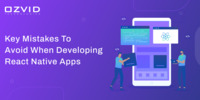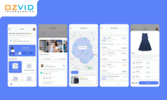- Mar 12, 2024
- Mobile App Development
- 26329
Share this post on:
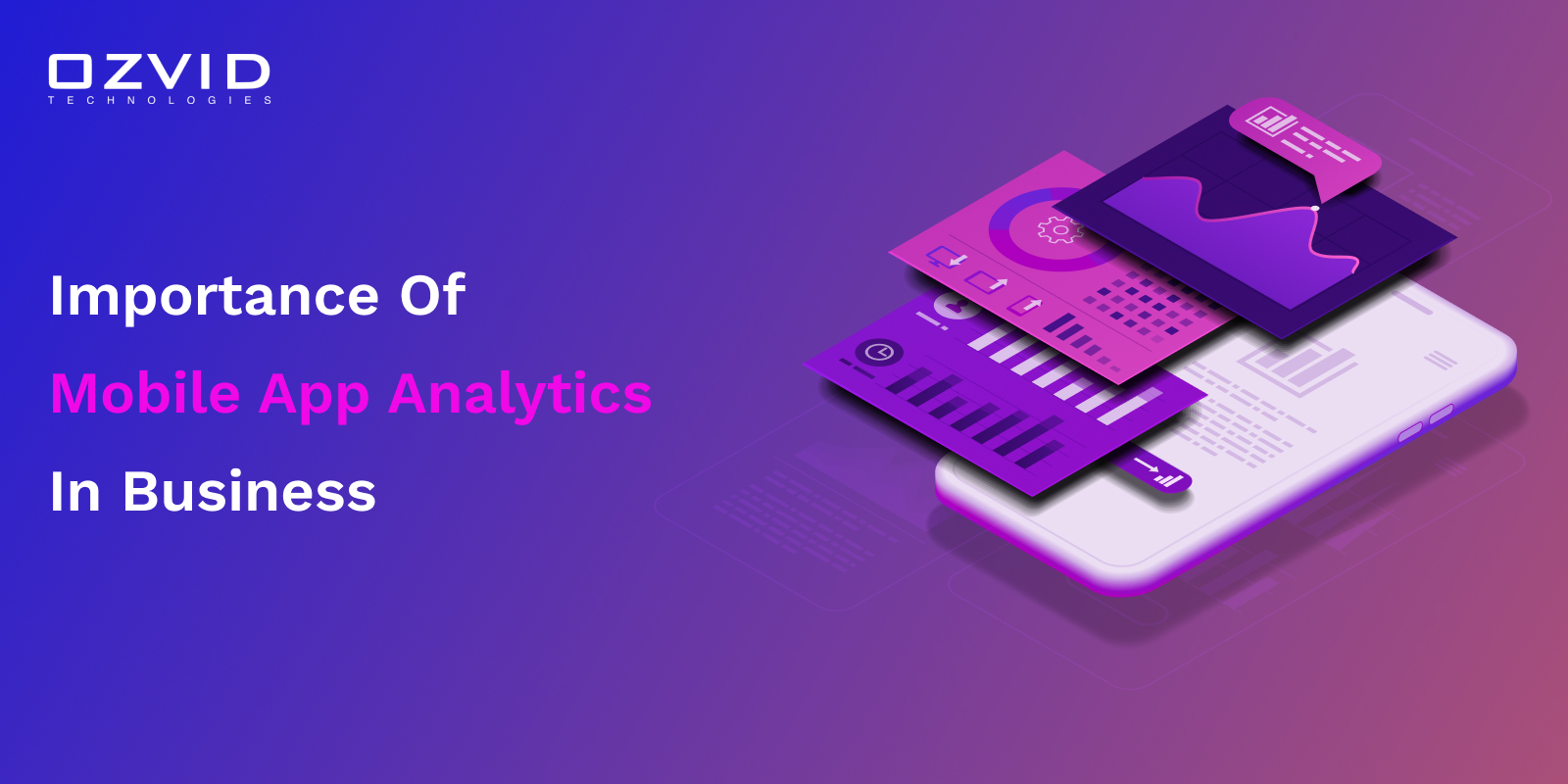
In today's digital age, mobile applications have become a main part of our daily lives. From social media platforms to e-commerce stores, mobile apps offer ease and accessibility like never before. However, simply developing and launching a mobile app does not ensure success. Mobile app analytics play a vital role to understand user behavior, optimizing performance, and driving business growth.
Why Mobile App Analytics?
Mobile app analytics refers to the collection, measurement, and analysis of data generated by users while interacting with a mobile application. This data encompasses numerous metrics such as user engagement, retention and conversion rates, in-app purchases, user demographics, and more. Businesses can make informed decisions to enhance their app's performance and user experience, achieving goals by leveraging these insights.
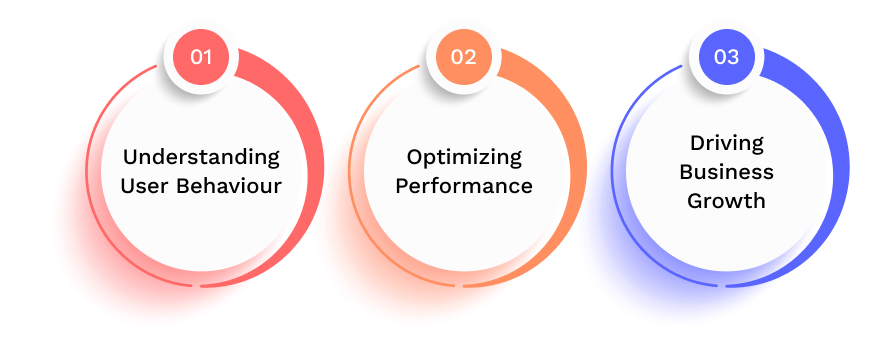
Understanding User Behavior: One of the main reasons why mobile app analytics is essential is its ability to provide deep insights into user behavior. By tracking user interactions within the app, businesses can gain valuable information about how users navigate through different screens, which features they engage with the most, and where they drop off or abandon the app. This data helps identify pain points and areas for improvement in the user experience.
Optimizing Performance: Mobile app analytics also play a vital role in optimizing the performance of an application. Businesses can identify bottlenecks or technical issues that may resist the app's performance by monitoring key performance indicators (KPIs) such as app load time, crash rates, latency issues, and network errors.
Driving Business Growth: Mobile app analytics provide valuable insights into user acquisition, retention, and conversion rates, which are crucial for driving business growth. By tracking the effectiveness of marketing campaigns, businesses can identify which channels or strategies yield the highest number of app downloads and conversions. This data enables them to allocate resources effectively and optimize their marketing efforts to reach a wider audience.
Furthermore, analytics can help businesses understand user preferences and behaviors that lead to higher conversion rates or in-app purchases. Businesses can tailor their offerings, promotions, and pricing strategies to maximize revenue generation by analyzing user demographics, engagement patterns, and purchase history.
The Main Mobile App Analytics Metrics:
Mobile app analytics metrics are essential for understanding the performance and user engagement of mobile applications. These metrics provide valuable insights into how users interact with an app, allowing developers and marketers to make data-driven decisions to improve user experience and drive business growth. Several key mobile app analytics metrics are commonly used to measure various aspects of app performance.
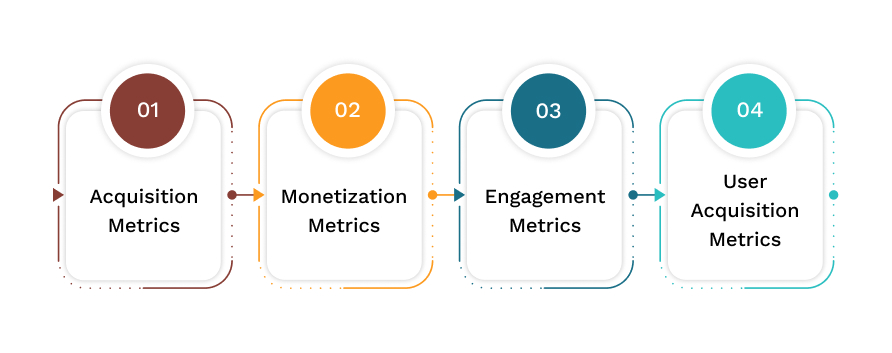
Acquisition metrics: Acquisition metrics focus on how users discover and install an app. These metrics help evaluate the effectiveness of marketing campaigns and user acquisition strategies. Some important acquisition metrics include:
a) App Store Impressions: The number of times an app is displayed in the app store search results or featured sections.
b) App Store Conversion Rate: The percentage of app store visitors who install the app after viewing its page.
c) Cost Per Install (CPI): The average cost incurred to acquire a single-user installation.
d) Organic vs. Paid Installs: The ratio of installs generated through unpaid means versus paid advertising campaigns.
Engagement metrics: Engagement metrics measure how users interact with an app after installation. These metrics provide insights into user behavior, session duration, and feature usage. Some important engagement metrics include:
a) Session Duration: The average time users spend in a single session within the app.
b) Screen Flow: The path users take through different screens within the app, indicating popular features and potential bottlenecks.
c) Daily Active Users: The number of unique users who engage with the app daily.
Monetization Metrics: Monetization metrics focus on revenue generation and profitability of an app. These metrics help evaluate the effectiveness of monetization strategies and identify opportunities for maximizing revenue. Some important monetization metrics include:
a) Average Revenue Per User: The average revenue generated by each user over a specific period.
b) In-app Purchases: The number and value of purchases made within the app.
c) Ad Revenue: The revenue generated through in-app advertising, including impressions, clicks, and conversions.
d) Lifetime Value: The predicted revenue generated by a user throughout their entire lifetime as an app user.
User acquisition metrics: User acquisition metrics focus on the effectiveness of different marketing channels and campaigns in acquiring new users. These metrics help optimize marketing strategies and allocate resources efficiently. Some important user acquisition metrics include:
a) Cost Per Acquisition: The average cost incurred to acquire a single user, taking into account all marketing expenses.
b) Conversion Rate: The percentage of users who complete a desired action, such as signing up or making a purchase, after clicking on an ad or visiting a landing page.
c) Click-through Rate (CTR): The percentage of users who click on an ad or promotional link out of the total number of impressions.
Crash Reporting Metrics: Crash reporting metrics provide insights into app stability and performance issues. These metrics help identify and fix bugs and crashes that may negatively impact the user experience. Some important crash reporting metrics include:
a) Crash Frequency: The number of times the app crashes per user session or active user.
b) Crash-Free Users: The percentage of users who experience no crashes during their app usage.
c) Top Crashing Screens: The screens or features within the app that are most prone to crashes.
Best Practices for Mobile App Analytics:
Mobile app analytics is a crucial aspect of understanding and optimizing the performance of mobile applications. It involves collecting, measuring, and analyzing data related to user behavior, app usage, and other main metrics. Developers and businesses can gain valuable insights into how their app is being used, identify areas for improvement, and make data-driven decisions to enhance the user experience and drive business growth by leveraging mobile app analytics.
To ensure effective mobile app analytics, there are several best practices that developers and businesses should follow:
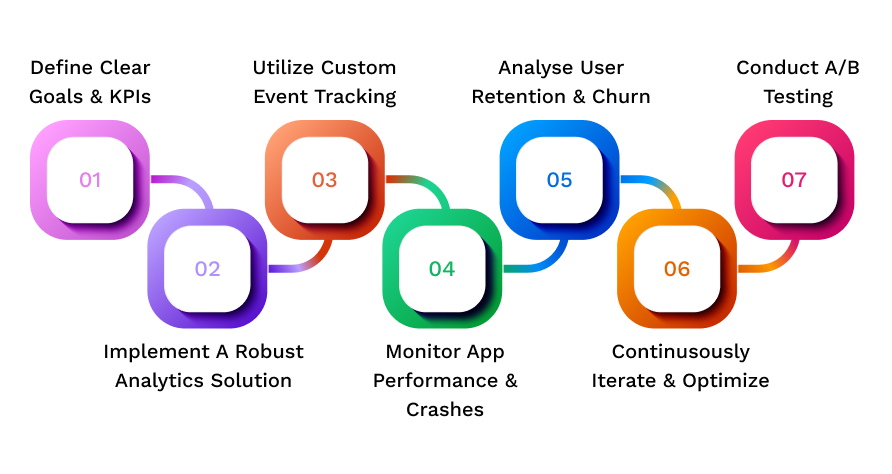
1. Define clear goals and key performance indicators (KPIs): Before diving into mobile app analytics, it is essential to establish clear goals and KPIs that align with the overall objectives of the app. This could include metrics such as user engagement, retention rate, conversion rate, or revenue generation. Defining these goals will help guide the analytics strategy and ensure that the collected data is relevant and actionable.
2. Implement a robust analytics solution: Choosing the right analytics solution is crucial for accurate data collection and analysis. There are numerous mobile app analytics tools available in the market, each offering different features and capabilities. It is important to select a solution that aligns with the specific needs of the app and provides comprehensive tracking of relevant metrics. Popular mobile app analytics tools include Google Analytics for Mobile Apps, Firebase Analytics, Mixpanel, and Flurry Analytics.
3. Track key events and user interactions: To gain meaningful insights into user behavior within the app, it is important to track key events and user interactions. These events could include actions such as app installs, registrations, in-app purchases, content views, social shares, or any other significant action within the app. By tracking these events, developers can understand how users are engaging with different features of the app and identify areas for improvement.
4. Utilize custom event tracking: In addition to tracking predefined events, it is often beneficial to implement custom event tracking to capture specific actions or behaviors that are unique to the app. Custom event tracking allows developers to measure and analyze user interactions that are not covered by default event tracking. By defining and tracking custom events, developers can gain deeper insights into user behavior and tailor their apps accordingly.
5. Monitor app performance and crashes: Mobile app analytics should not only focus on user behavior but also include monitoring app performance and identifying any issues or crashes. Tracking metrics such as app load time, response time, crash rate, or error logs can provide valuable insights into the stability and performance of the app. This data can help developers identify and resolve any technical issues that may impact the user experience.
6. Analyze user retention and churn: Understanding user retention and churn rates is crucial for measuring the long-term success of a mobile app. By analyzing these metrics, developers can identify factors that contribute to user retention or churn, such as the onboarding experience, feature usage, or frequency of app updates. This information can guide efforts to improve user engagement and reduce churn rates.
7. Conduct A/B testing: A/B testing involves comparing two or more variations of a feature or design element to determine which performs better in terms of user engagement or conversion rates. By conducting A/B tests, developers can make data-driven decisions about optimizing the app's UI/UX, content placement, or any other aspect that may impact user behavior. Mobile app analytics tools often provide built-in A/B testing capabilities to simplify the process.
8. Continuously iterate and optimize: Mobile app analytics is an ongoing process that requires continuous monitoring and optimization. It is important to regularly review the collected data, identify trends or patterns, and make informed decisions to improve the app's performance. By iterating and optimizing based on analytics insights, developers can enhance user experience, increase user engagement, and drive business growth.
Conclusion:
In conclusion, mobile app analytics play a vital role in understanding user behavior, optimizing performance, and driving business growth. By leveraging the power of data insights, businesses can make informed decisions to improve their app's design, functionality, and marketing strategies.
So, if you are looking to develop robust and secure mobile apps, OZVID Technologies is the perfect choice. We have a well-versed team of developers who have helped numerous businesses grow by offering them robust mobile apps.





